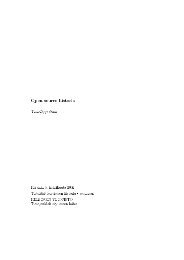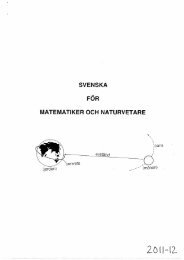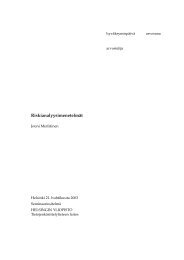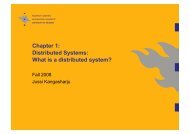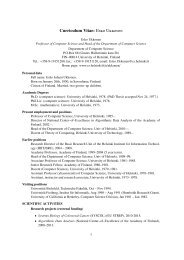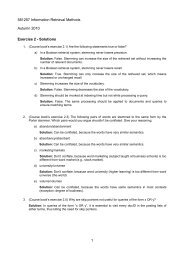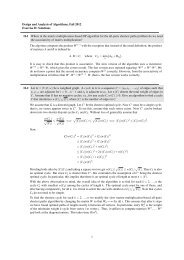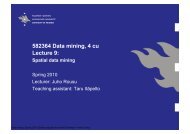Calculating trust in sensor networks
Calculating trust in sensor networks
Calculating trust in sensor networks
You also want an ePaper? Increase the reach of your titles
YUMPU automatically turns print PDFs into web optimized ePapers that Google loves.
Figure 11: A graph of average reputations <strong>in</strong> a grid of nodes. The grid conta<strong>in</strong>s 17 normal<br />
nodes and 3 black hole -nodes.<br />
47.<br />
This way each scenario would produce 6 different results that could be used to assess how<br />
a <strong>trust</strong>ed rout<strong>in</strong>g protocol and a cha<strong>in</strong> of <strong>trust</strong> -scheme will operate <strong>in</strong> a <strong>sensor</strong> network.<br />
S<strong>in</strong>ce a <strong>trust</strong>ed rout<strong>in</strong>g protocol requires <strong>in</strong>formation about its neighbours before it will<br />
operate normally, the network was primed by transmitt<strong>in</strong>g random data between the<br />
nodes. This was implemented by two nodes on the opposite corners of the grid each<br />
download<strong>in</strong>g roughly 2 kB of data from each non-malicious node. In a 5x5 grid of nodes<br />
with 23 transmitt<strong>in</strong>g nodes and a 256 byte payload this would amount to around 170<br />
packets transmitted. At that po<strong>in</strong>t, every node will have a pretty good op<strong>in</strong>ion about its<br />
neighbours.<br />
5.1 Scenario 1: A cloud of nodes<br />
Scenario number 1 consists of 25 nodes aligned <strong>in</strong> a 5x5 grid. When malicious nodes are<br />
added to the grid, they are spaced as a cluster of 7 nodes near one side of the grid. Nodes<br />
<strong>in</strong> the opposite left lower- and right upper-corners function as the service ask<strong>in</strong>g nodes.<br />
46




